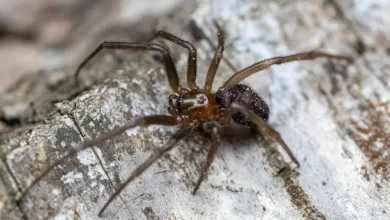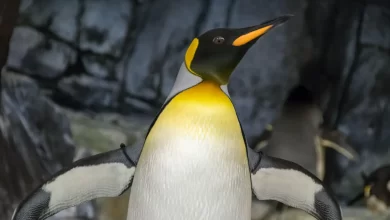Turtles are a group of reptiles that have a unique shell, which is made up of bony plates that are fused to the spine and ribcage. The shell provides turtles with protection from predators and helps them to regulate their body temperature. Turtles can be found on every continent except Antarctica, and they can live in a variety of habitats, such as freshwater ponds and rivers, coastal marshes and beaches, and even deserts and mountains. They are also known for their long lifespan; some species can live over 100 years. Some turtles are terrestrial, and some are aquatic, and they are known to have strong homing instincts; they are able to find their way back to their birthplace to lay their eggs.
- Turtles have been around for over 200 million years and are considered one of the oldest and most successful groups of reptiles.
- Turtles are reptiles and are characterized by their unique shells, which consist of a top shell (carapace) and a bottom shell (plastron).
- The carapace and plastron are made up of bony plates that are fused to the spine and ribcage, providing turtles with protection from predators and helping them to regulate their body temperature.
- The sea turtle lays up to 100 eggs, which incubate for roughly 60 days in the warm sand.
- There are over 310 species of turtles in the world, which are classified into three groups: tortoises, freshwater turtles (terrapins), and marine turtles.
- Turtles come in a wide variety of shapes and sizes, from the tiny Bog turtle, which grows to only 4 inches long, to the giant Leatherback sea turtle, which can reach over 6 feet in length and weigh over 2,000 pounds.
- Turtles are ectothermic, which means that they regulate their body temperature according to the environment.
- Turtles, like other animals, make noises when they are stressed, angry, or aggressive. Turtles have been observed making hissing noises to warn predators and bystanders when they are threatened.
- Compared to other reptiles, turtles are better at hearing frequencies around 500 Hz. Due to resonance in the middle ear cavity, they also have lower underwater hearing thresholds than those in the air.
- They have strong homing instincts and are able to find their way back to their birthplace to lay their eggs.
- On September 23, 1988, a male leatherback turtle was discovered dead on the beach at Harlech, Gwynedd. It was 2.91 m (9 ft 512 in) long overall, 2.77 m (9 ft) across the front flippers, and weighed 961.1 kg (2,120 lb).
- Some species of turtles are considered to be endangered due to factors such as habitat loss, hunting, pollution, and the illegal pet trade. Some of the endangered species of turtles are:-
(i) Radiated Tortoise
(ii) Painted Terrapin
(iii)Angonoka Tortoise
(iv) Kemp’s Ridley Sea Turtle
(v) Philippine Forest Turtle - Turtles are known for their long lifespan, and some species can live over 100 years. Most marine turtles mature between 20 and 30 years and continue to reproduce for another ten years.
- Some turtles are herbivorous, while others are carnivorous, and they feed on a wide variety of foods, such as plants, fish, and insects.
- Most turtles are able to retract their head and legs into their shells for protection. Some Sea turtles don’t have this ability.
- Sea turtles are known to migrate long distances between feeding and nesting areas. These migrations cover hundreds or even thousands of miles.
- Some species of turtles, such as the leatherback sea turtle, are able to tolerate a wide range of water temperatures and can dive to depths of over 1,000 feet.
- The sex of a turtle is decided by the temperature at which the eggs are incubated, with warmer temperatures producing females and cooler temperatures producing males.
- Certain species of turtles, such as the box turtle, have the ability to close the opening of their shells (the plastron and carapace) to protect themselves from predators.
- Some species of turtles, like the red-eared slider and the painted turtle, have webbed feet, which allow them to swim effectively.
- Some species of turtles, such as the Galapagos giant tortoise, have a lifespan of over 100 years.
- Many species of freshwater and land turtles hibernate during the winter months.
- Some species of turtles, such as the snapping turtle, have powerful jaws and beak-like mouths that they use to catch fish and other aquatic prey. The bite force of these turtles is about 209 Newtons of force.
- Some species of turtles, such as the box turtle, are able to walk on land and swim in the water.
- Some species of turtles, such as the leatherback sea turtle and the hawksbill sea turtle, have a soft, leathery shell rather than a hard shell.
- In some cultures, turtles are considered a symbol of wisdom, stability and longevity.
- Some species of turtles, such as the green sea turtle, are known to be herbivorous and feed on seagrass and algae.
- Some species of turtles, such as the alligator snapping turtle, can weigh over 200 pounds and also have a very strong bite.
- Some species of turtles, like the loggerhead sea turtle, the leatherback sea turtle and the green sea turtle, are known to nest on specific beaches and will return to the same beach year after year to lay their eggs.
- All tortoises are turtles as they are reptiles with bony shells that belong to the order Testudines or Chelonia—but not all turtles are tortoises.
- May 23 is celebrated as World Turtle Day. The day was established as an annual observance to help people celebrate and protect turtles and tortoises, as well as their diminishing habitats around the world, and to inspire human action to help them live and prosper.
- Turtles require heat and light in order to survive. Light aids in the regulation of turtles’ circadian rhythms. This means that they, like us, require intervals of day and night to function correctly.
- Turtles have no teeth at all! They have a beak like a bird instead. Carnivorous turtles use their strong jaw muscles and thick beaks to break the shells of their prey, such as crabs, sea urchins, and other small sea creatures. Baby turtles have what is known as an egg tooth or caruncle, but in actuality, it is not a tooth.






